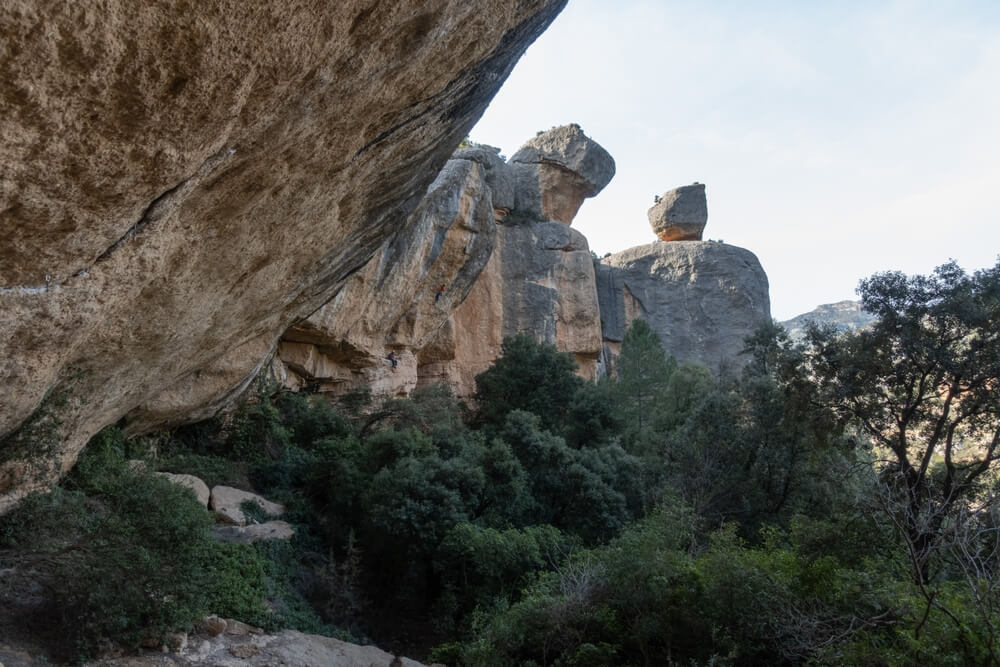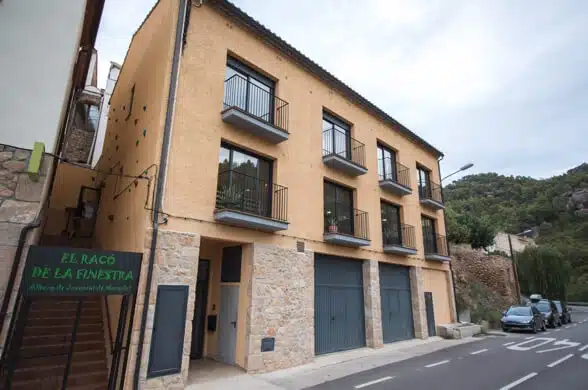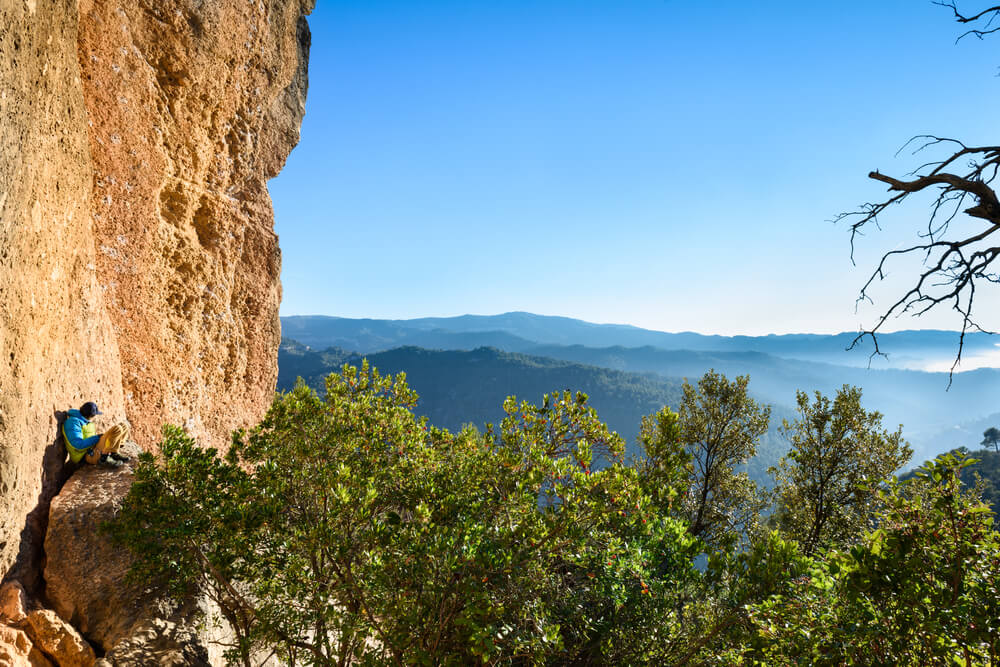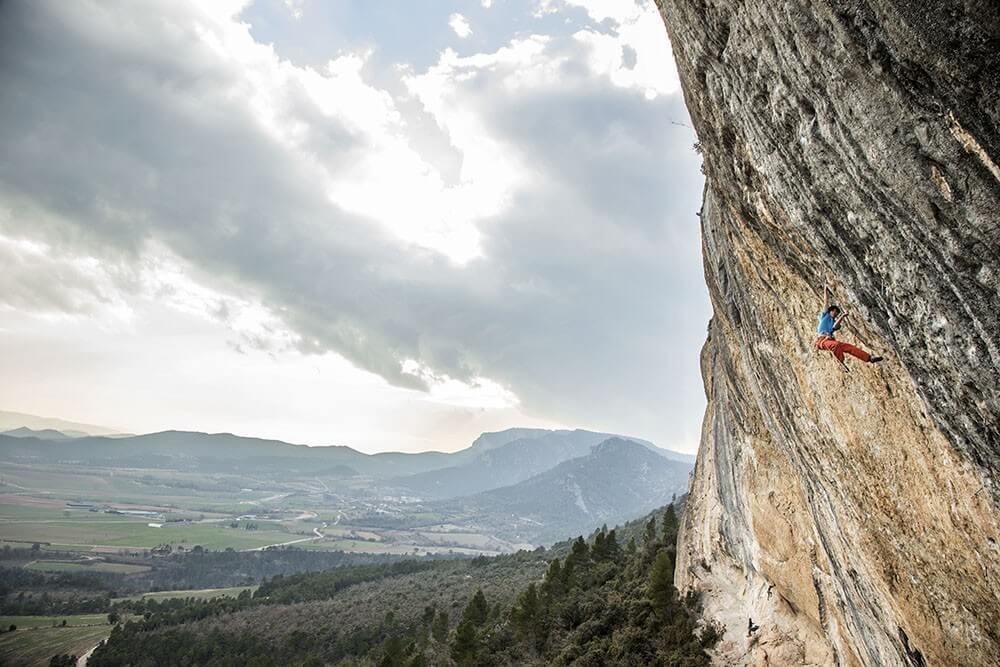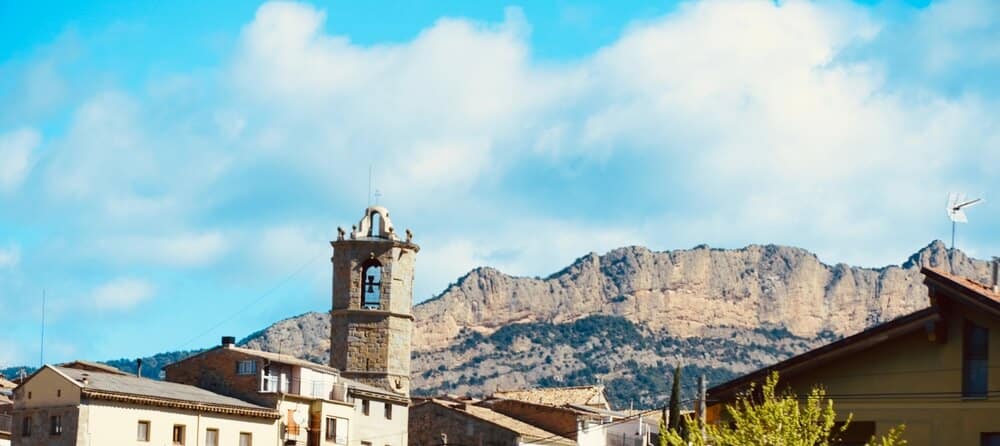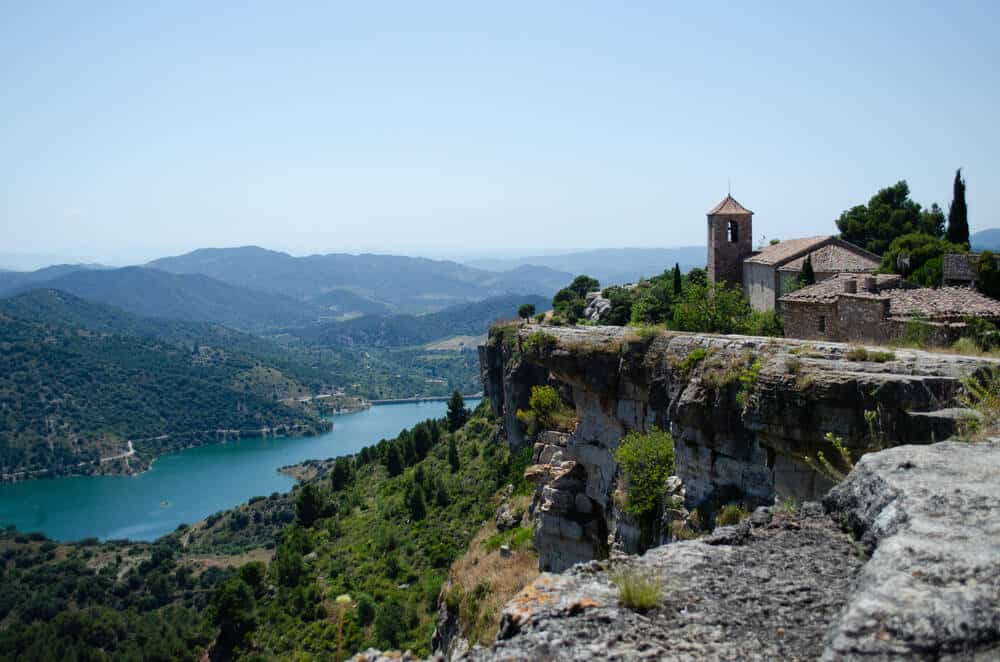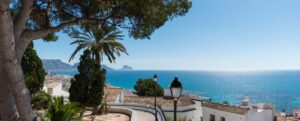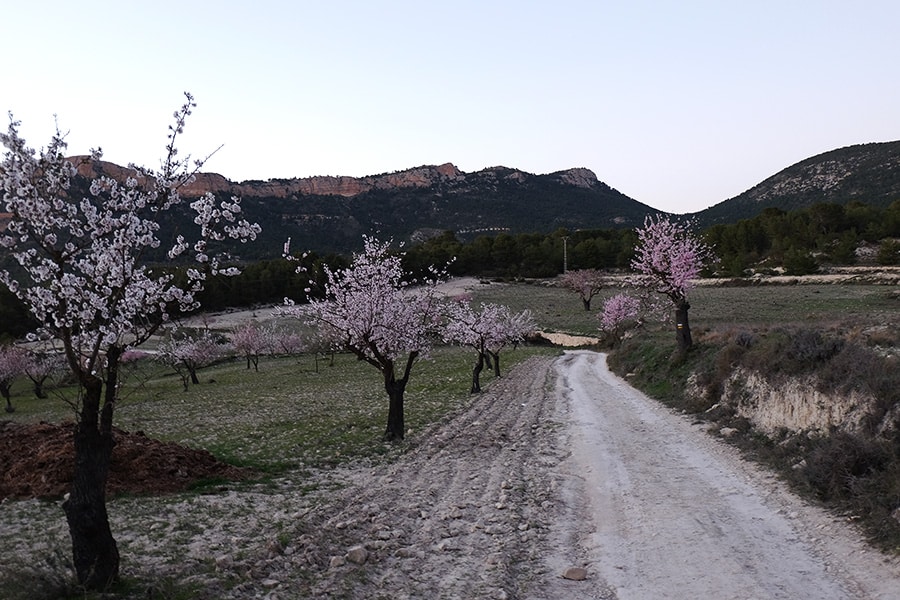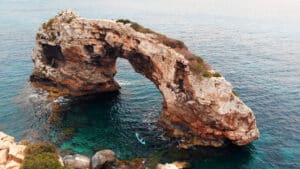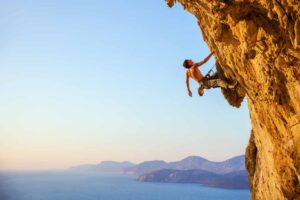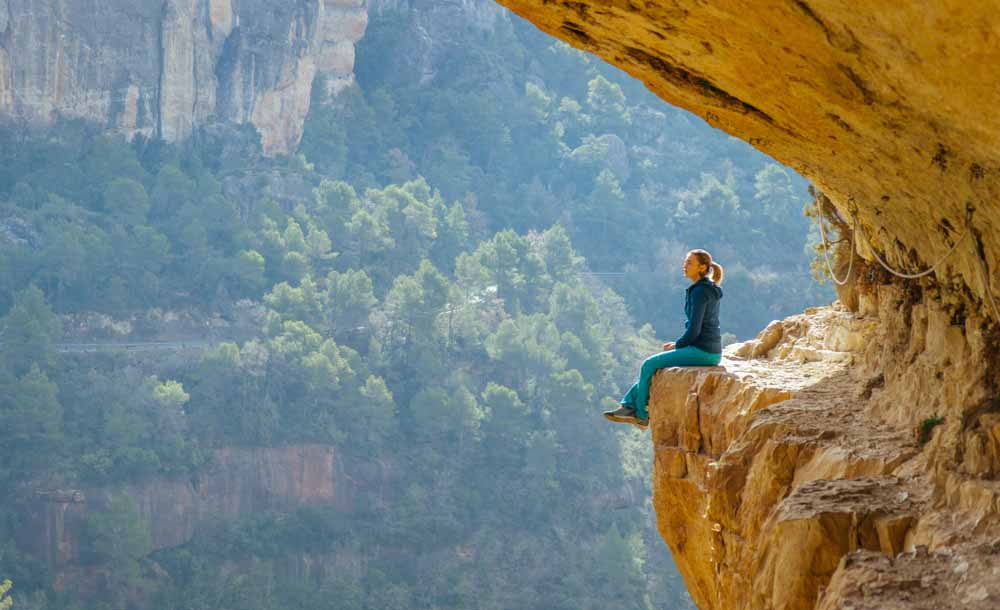It’s well known that Spain is heaven on earth for rock climbers. Warm weather, wine, and the balmy Mediterranean only a stone’s throw away? What’s not to like?
But for sport climbers in particular, if you’re making a trip to Spain and can only visit one region, Catalunya is the place to go without question. There is a powerful argument that the Catalan region claims the best sport climbing in Europe, if not the world.
Note: If you’ve already familiar with Catalunya and want to discover a new area in Spain, you can check out our Guide to Costa Blanca, a bit further down the Spanish coast, or our Guide to Spain.
What is Catalunya?
Catalunya is the native Catalan name for Catalonia, an autonomous community in Spain. (We’ll use Catalunya for this article.) Nestled south of the Pyrenees Mountains on the northeastern coast of the Iberian Peninsula, Catalunya borders France and Andorra to the north, with an extensive Mediterranean coastline along the southeast.
Catalunya contains Spain’s second-largest city, Barcelona, and is home to its own independent language and culture. For that reason among others, Catalunya has famously pursued independence from greater Spain for centuries. The origins of the Catalan independence movement began in the early 1800s and protests for independence continue today.
You can find many different types of rock in Catalunya, but the most common and popular climbing is limestone and conglomerate. There are dozens of crags in Catalunya and thousands of routes, but the best crags for sport climbers are Margalef, Oliana, and Siurana. Each of these is no more than two hours from Barcelona. We’ll explore each of Catalunya’s “Big Three” crags below.
Nearby Crags
Margalef
Margalef, a small village hidden in a canyon on the western edge of Montsant National Park, has become a hidden gem for sport climbers. While the cliffs may initially appear unassuming, slabby, and lichen-covered, a closer look reveals remarkable climbing on unique features. In short, the climbing here is characterized by conglomerate cliffs with layered, bulging formations. The conglomerate is covered with tufa curtains, limestone deposits that also harden the underlying conglomerate. These features have earned Margalef a reputation as a world-class sport climbing destination.
Unlike some other cobblestone areas, knob climbing is the exception here. Most routes involve pockets, and climbers should be prepared for edging and crimping. Like most destinations in Catalunya, Margalef offers a wide range of route grades, making it suitable for climbers of all levels.
From beginner-friendly routes to challenging, steep overhangs and tufa routes for intermediate climbers and pros, you’ll find something to match your skill level and preferences. Infamous sectors here include Raco de Les Espadelles and for the superhuman, the road-side El Laboratori, home to Chris Sharma’s First Round, First Minute 9b.
The Margalef Rock Climbing Guidebook, first printed in 2017 but republished with a third edition in 2022, is the best resource for climbing in Margalef. It’s also worth noting that while Margalef has fewer established climbs than nearby Siurana, Margalef’s potential is perhaps even greater… There’s a lot of opportunity for new routes here, and many open projects.
Where to Stay
Margalef offers various accommodation options, including campgrounds, guesthouses, and climbers’ hostels. It’s a good idea to book your accommodation in advance, especially during peak climbing seasons. The village of Margalef has basic amenities, including a few restaurants and a climbing shop. For a wider range of services and supplies, you can visit the nearby town of Falset.
When to Go
Margalef is a popular winter climbing destination, as the weather is mild and pleasant during this season. The prime climbing months are from late autumn through early spring. Summers can be scorching, so it’s best to avoid climbing during this time.
Oliana
Farther to the north, near Lleida, the comparatively smaller crag of Oliana is famous for its steep, overhanging limestone cliffs. Most routes feature significant overhangs, long tufas, and massive pockets, making for extremely physical climbing, demanding precise, powerful movement and pump control.
Be prepared for endurance and stamina-focused climbing. Walls here vary in height but can stretch up to 175 feet or higher. It’s recommended that climbers be able to lead 5.10 at least to enjoy the climbing at Oliana, and naturally, the quality increases with difficulty. There are some super hard routes here, and in peak season it’s not uncommon to queue for some reference 9a’s or above.
Oliana is famously home to many benchmark routes bolted by Chris Sharma, including La Dura Dura (5.15c) which was ultimately sent by Adam Ondra. Soon after (with Sharma’s repeat), the route became the first consensus-graded 5.15c in the world.
Where to Stay
The town of Oliana offers a variety of accommodation options, including campgrounds and guesthouses. Reservations are a good idea, especially during the high season.
The town has essential amenities such as restaurants, bars, and shops, but even traveling from town to crag will require a car. For a broader range of services and supplies, consider nearby towns like Balaguer and Lleida.
When to Go
Oliana is a year-round climbing destination but is best in the shoulder seasons and winter. During these periods, the weather is ideal for climbing, with comfortable temperatures and minimal rain.
Closer to central winter, however, the weather can be unpredictable, and night temperatures plummet (camping can be a freezefest in the winter!). Like elsewhere in Catalunya, summers are sweltering, and not an ideal time to climb.
Siurana
Though Margalef and Oliana are also among Catalunya’s “Big Three,” Siurana is the largest and most well-known sport climbing area of them all, and perhaps the most famed sport climbing crag in Europe.
Surrounding the pristine eponymous hilltop village, Siurana’s limestone is world-class, rife with intricately sculpted sinker pockets and pristine edges, arrayed over orange, blue, yellow & black streaked cliffs.
The climbing here is generally quite precise and technical, on near-vertical walls. Siurana’s climbing is spread out between more than two dozen individual crags, however, so there’s something for everyone here, ranging from 100-foot slabs to short, overhung powerfests. There are few tufas, however, so those looking for that style of climbing are better served at Margalef.
The Siurana Climbing Guidebook is the recommended resource for exploring the climbing Siurana offers, though there are other guidebook options, and the Mountain Project page for this crag is better than Margalef and Oliana’s.
Note: Grades in Siurana are fairly stiff. Be warned. Don’t come with a fragile ego.
Where to Stay
Siurana has a variety of guesthouses and camping areas. The village itself offers lodging options, as do nearby towns like Cornudella de Montsant and Prades. To secure lodging, consider booking in advance, especially during peak climbing seasons. Again, a car is recommended.
When to Go
Like Margalef and Oliana, Siurana is best visited between autumn and spring to avoid high temperatures. Most climbers travel there between November and March. Summers are a no-go. Winter temps are more moderate than Oliana, with Siurana being a mere 20 miles from the Mediterranean.
Free Camping in Catalunya
Wild or “free” camping is permitted in many parts of Catalunya, but there are legal restrictions to keep in mind. The key is to be respectful and follow basic responsible camping practices (Leave No Trace). Camp away from private property, urban areas, and designated protected areas, and in general, always use good judgment and err on the side of caution. Wild camping is a privilege, not a right, and poor behavior on the part of campers will result in increased regulation (if not outright bans).
Catalunya generally has an arid climate, and open fires are prohibited in many areas around Catalunya due to the risk of wildfires. Check local regulations and if building a fire, use designated fire rings or practice extreme caution.
Another thing to note, Catalunya has a rich and longstanding cultural heritage, and some free camping areas may be near cultural sites or historic monuments. All three of the above crags are quite close to historic sites, particularly Siurana. Always show respect for local customs and historical sites, and follow specific guidelines in those areas.
The Catalunya Climbing Community
Overall, the climbing community in Spain and Catalunya is extremely welcoming. There’s a reason many pros, including Chris Sharma, call the region home!
There are many, but the group “Climb Catalunya” is one great resource for visiting climbers, offering guided trips and other assistance ranging from weekend getaways to educational courses. They also have a “buddy scheme” to offer partners for experienced climbers who don’t need a guide.
Otherwise, if you have the time, visit gyms in Barcelona, stay at climber-established lodging, and in general attempt to connect with local climbers. This is the best way to learn more about the climbing in Catalunya.
While Margalef, Siurana, and other popular areas are becoming more well-known, with most of the crags in Catalunya, it’s best to use local guidebooks and connect with local climbers. The region is seeing rapid development, and international resources like Mountain Project are often woefully out of date, often only listing the tip of the iceberg regarding routes and crags.
It’s worth noting that climbing in Catalunya is difficult without a car. As mentioned above, all three of the best crags in the region are around two hours from Barcelona, and even Margalef and Siurana, which are much closer than Oliana, are an hour’s drive (40km) apart. Most crags are best reached via car from the nearest village, as well.



